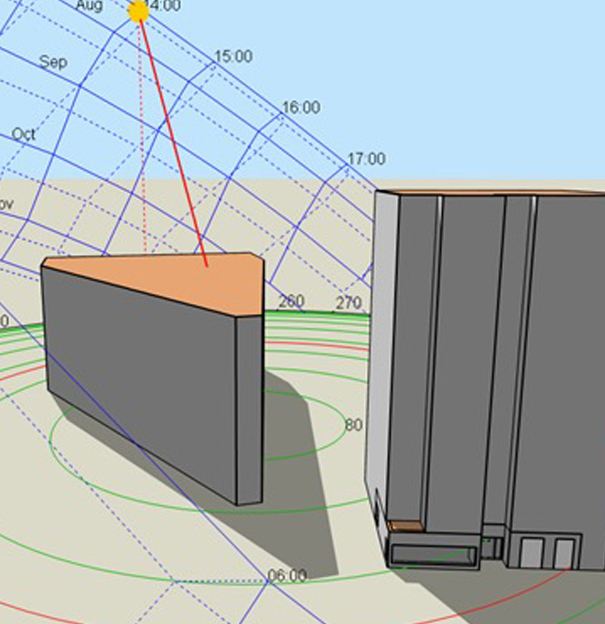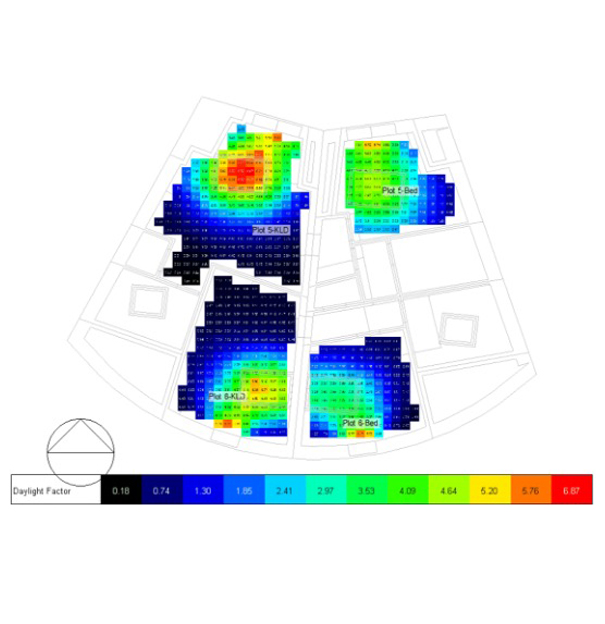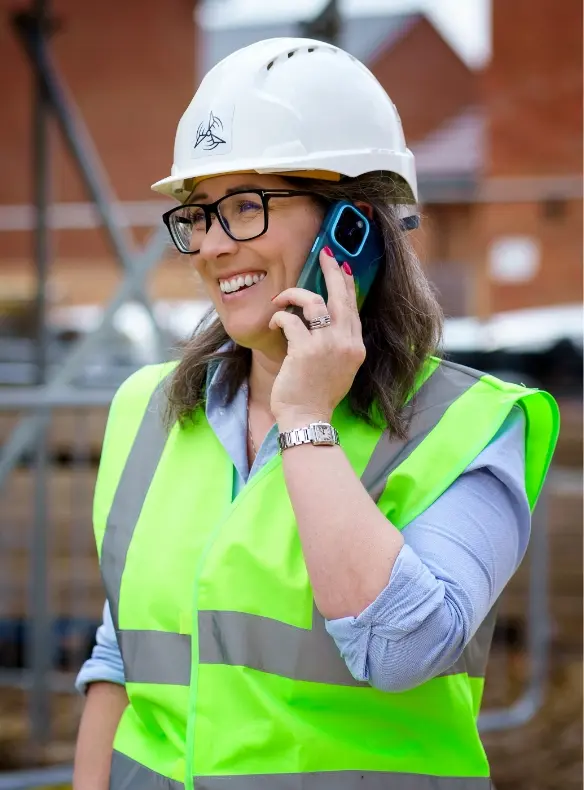
External Daylighting, Sunlight & Overshadowing Analysis
Home > External Daylighting, Sunlight & Overshadowing Analysis
Why Overshadowing Assessments Matter
External daylight, sunlight, and overshadowing assessments are a planning requirement for developments that may reduce light to neighbouring buildings, windows, or gardens.
These assessments help:
- Optimise building design
- Understand development impact
- Meet local authority planning policies

Key Tests in a Daylight / Sunlight Report
Our reports follow the 2022 BRE Guidelines and include:
Daylight Assessment:
- Vertical Sky Component (VSC): A window may be adversely affected if its VSC measured at the centre of the window is less than 27% and less than 0.8 times its former value.
- No Skyline (NSL): A room may be adversely affected if the daylight distribution (NSL) is reduced beyond 0.8 times its existing area.
Sunlight Assessment:
- Annual Probable Sunlight Hours (APSH): A window may be adversely affected if a point at the centre of the window receives for the whole year, less than 25% of the APSH including at least 5% of the APSH during the winter months (21 September to 21 March) and less than 0.8 times its former sunlight hours during either period, and for existing neighbouring buildings, if there is a reduction in total APSH which is greater than 4%.
Overshadowing Assessment:
- Sun Hours on Ground (SHOG): An amenity area may be adversely affected if less than 50% of its area receives less than 2 hours of direct sunlight on 21st March and less than 0.8 times its former value.

How SEES supports you?
We provide detailed analysis using industry-standard tools, including:
- VSC, APSH, and Daylight Factor Calculations
- Climate-Based Daylight Modelling (CBDM) – compliant with updated 2022 standards
Our assessments support:
- Pre-app design and site feasibility
- Planning submissions
- Neighbouring property impact reports
- Overshadowing to Gardens and Open Spaces

